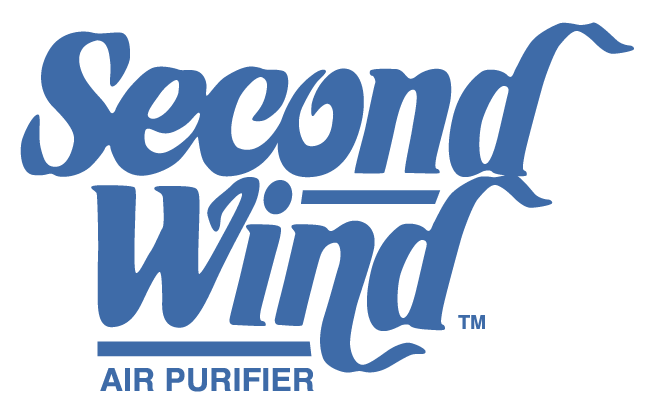| Aug. 31, 2021, 9:00 a.m.
West Valley City • When smog and ozone levels spike, our homes should be a place to take refuge. But for some households, especially low-income ones, that’s not always the case.
Old carpet, moldy swamp coolers and leaching chemicals can be sources of indoor air pollution on their own. Leaky windows, failing insulation and poor circulation can allow bad air to seep inside and become trapped. And for residents on fixed incomes or struggling to pay their bills, it can be difficult to set money aside to make much-needed home repairs that can improve their health.

(Francisco Kjolseth | The Salt Lake Tribune) Cornelius and Patricia Headley, who have owned their home in West Valley City for almost 20 years, welcome representatives with Salt Lake County who have partnered with the University of Utah, and another independent scientist, to install indoor air quality monitors in at-risk homes as part of a study running through the end of the year, capturing summer smoke and ozone, as well as inversion pollution.
Such was the case for Cornelius and Patricia Headley, who haven’t had a functioning heating or cooling system for four years, instead relying on the electric stove in their kitchen and space heaters to stay warm. Two of their adult children live with them, and a third is staying in the living room while he recovers from surgery.
“It’s challenging to sleep in the basement with no heat,” Patricia said, “and it’s challenging to sleep upstairs with no A.C.”
All the occupants but Patricia have been diagnosed with asthma, and the stagnant air in their West Valley City home, along with its rough shape, isn’t helping. They turned to Salt Lake County for help.
“It was either we wait until the house falls down around us or try to move,” Patricia explained, “and moving wasn’t an option.”
The county is providing the family a no-interest loan through the Green and Healthy Homes Program to clean up lead paint, replace old windows and install a new HVAC system to circulate fresh air.
“If I can breathe again, it will be great,” said Cornelius, who had to retire early from his job at Kennecott due to health issues, including sleep apnea.
The funds will be paid back when the Headleys someday sell their home or when the house changes title.
“With the pandemic, people are in their homes more, so it needs to be a safe place,” said Jordan Carroll, spokesperson for the county’s Office of Regional Development.
The Green and Healthy Homes Program isn’t new, fixing up about 80 houses each year. County officials say the renovations improve families’ health, resulting in fewer missed days at school and work, fewer trips to the hospital and lower utility bills, which leave more cash for families to invest in their quality of life.
While it makes sense that upgraded windows and a well-functioning furnace would improve homeowners’ health and financial stability, the county has never collected hard proof.
“We know there are benefits,” Carroll said, “but we’ve never had data.”
This summer, the county partnered with scientists to begin gathering that data at 10 homes in the valley, including the Headleys’. Air monitors placed outdoors, in bedrooms and in common living spaces will collect measurements of ozone and the fine particulate pollution from inversion smog and wildfire smoke. The researchers will compare the numbers before and after a home is renovated.
“A properly functioning household environment almost serves as a respirator,” said Scott Collingwood, a U. assistant professor in pediatrics who is a partner in the study. “It should provide all of us, if it’s operating properly, a respite from outdoor air quality.”

(Francisco Kjolseth | The Salt Lake Tribune) West Valley City home owner Patricia Headley joins Bryan Clayton, center, project manager for Salt Lake County and Daniel Mendoza, CEO of AQUEHS, CORP., as they fire up a couple of air monitors installed inside and outside of Headley’s home on Tuesday, Aug. 17, 2021. Mendoza was quickly able to see that the air quality inside the home was slightly worse on this day. The county's Green and Healthy Homes Program is doing a study to help families make changes to improve the air quality in their homes.
As smoke from Western wildfires choked the Wasatch Front recently and air monitors hummed to life at the Headleys’ place, for instance, they showed the air quality inside was actually worse than outside.
“The house is pretty porous, so all the outside air is getting in, and it just gets trapped,” said Daniel Mendoza, CEO of AQUEHS Corp., another study partner.
The planned improvements should help remedy that and help the Headleys breathe easier and more safely.
The county used $200,000 to buy the equipment and get the indoor air monitoring pilot launched. The Green and Healthy Homes Program will spend about $1,000 per project moving forward to assess pollution inside homes, Carroll said.
Some of the monitoring equipment is bulky, whirling in the background like an electric razor that never turns off.
But for Patricia Headley, any minor inconvenience from the air monitors is worth the peace of mind it will bring. Past assessments from Green and Healthy Homes found lead paint on the home’s foundation in the backyard, where her grandchildren frequently play.
“If they didn’t come out and do any testing, we wouldn’t know,” she said, adding that the kids have since been evaluated by doctors and are healthy. “[But] because they found lead, we qualified for the other services. If it weren’t for that, we didn’t know what we were going to do. ... It’s like a miracle.”
How to improve the air quality inside your home
Poor indoor air quality can impact anyone, regardless of income. For homeowners and renters who do not qualify for Green and Healthy Homes assistance, here are some easy and inexpensive steps to take to improve your living space.
• Repair damaged paint. Lead-based paint wasn’t banned in the U.S. until 1978, so there’s a good chance lead is in painted surfaces in older homes, even if it’s layers deep. Lead is bad for everyone, especially kids. The good news is that well-maintained paint usually doesn’t pose a threat, according to the U.S. Environmental Protection Agency. If you have flaking, deteriorating paint inside or outdoors, repair the surface by painting over it. Watch for areas that regularly rub and create paint dust, like windows and doors. The EPA has more lead paint safety advice online.
• Dust and vacuum. One of the easiest ways to improve indoor air is to regularly keep surfaces clean. Wet cleaning, by using a mop or damp rag, helps prevent dirt from becoming airborne. The Green and Healthy Homes Program also recommends using natural cleaners, since harsher ones can contain volatile organic compounds that irritate the eyes and nose, and can cause long-term damage.
• Test for radon. Utah is prone to high levels of radon. While the gas naturally occurs in our soils, it can leach through foundations and basement walls, concentrating indoors and causing health issues like lung cancer. The Utah Department of Environmental Quality recommends using discounted $11 kits from Alpha Energy Laboratories that you can use to collect air samples yourself, then mail in to get the results. If there are high levels in your home, both DEQ and the EPA recommend hiring a professional to install a ventilation system. The cost of that should be around $1,500, according to DEQ.
• Check ventilation. Check weather stripping around windows and doors to keep your energy bills low and ensure outdoor pollutants aren’t seeping in. Change your HVAC filter every three months. And while evaporative coolers are popular in arid Utah, Bryan Clayton, with Salt Lake County’s Green and Healthy Homes Program, recommends swapping them out for air conditioning units. “A swamp cooler,” Clayton said, “brings in all the pollen, the smoke, everything that’s outside.”
• Keep things dry. Moisture means mold, which can have dangerous health effects. The Green and Healthy Homes Program recommends looking for leaky plumbing (when’s the last time you checked the cabinet under your kitchen sink?) and inspecting your roof. Ensure stormwater channels away from your house and doesn’t seep inside. You can also install ventilation fans in bathrooms.








